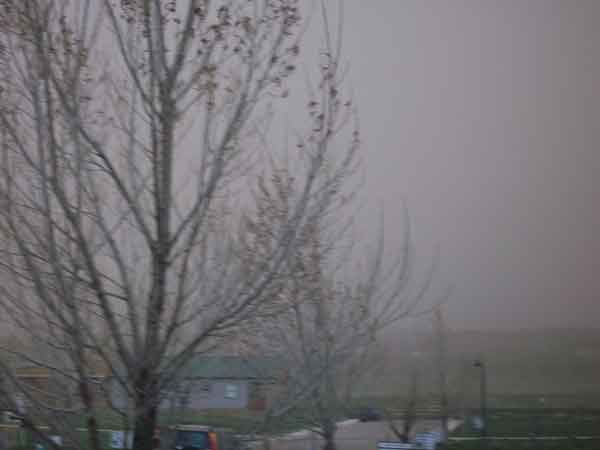By D. Dion
Editor, Norwood Post
Published: The approximately 250 people who filled the Nucla High School gym last week were there to witness a different kind of rivalry than the basketball games that usually inhabit the venue. Instead, they came to debate the proposed uranium mill in Paradox Valley, a project that has electrified the fence between area residents who want jobs and those who are wary of the environmental impacts of such a facility.
The Montrose County Planning Commission held the public hearing to gather input about the proposed mill before making a recommendation to the county commissioners about a permit. The 880-acre project site is on private land zoned for agricultural use, not for industrial operations like processing ore, so it will require a special use permit for the proposed mill. The planning commission deferred its decision on the permit to a June 10 meeting, but both County Planning Director Steve White and the West End Planning Advisory Committee (made up of residents who live closer to the proposed project) recommended approval of the permit.
Although the majority of the crowd at the meeting seemed in favor of the project, either wielding signs of support or clapping after every pro-mill comment, there was also a lot of skepticism about the mill. The site’s neighbors and farmers in Paradox asked the commission to deny the permit, which they said was in conflict with how the surrounding lands are used.
“Agriculture is why we bought here,” said Martha Burgess, an organic farmer in Bedrock just a few miles from the proposed mill. “We feel that the contaminants would dangerously compromise our operations for both the animals and vegetables that we produce.”
Residents on the other side of the proposal, in Nucla, were put off by people from Telluride, Ridgway or Utah who expressed concern about the contamination of the water or air. Paradox may still be pristine, but Nucla is nearer to Uravan, the toxic remnants of an old uranium mill that produced yellowcake for the Manhattan Project. The uranium industry, mining and milling, has been a part of the culture in Nucla for generations. West end citizens argued that the advent of a new mill would provide jobs and invigorate the economy. Several remarked that they, or their families, had worked in the uranium industry before and that they don’t “glow in the dark.”
Glowing in the dark is not the real concern, of course — lung and kidney diseases, blood cancers and high mortality rates have been associated with uranium mill workers. Former Nucla resident Ryan Farmer tackled the elephant in the room, the health risks, and said that it wasn’t that the Nucla locals didn’t understand the risks. They do, he said. They just think that they are acceptable.“Who here has lost a family member?” asked Farmer, and several people raised their hands. “If anybody knows the long term and health effects, it’s them. They’ve lived it. And they think the risks are worth it, and they want [the mill].”
A younger Nucla native, 21-year-old Mallory Rice, had a different perspective.
“The economic benefits are great for the community, however, they are very shortsighted given the history here … Please consider the long-term effects,” she said.
The planning commission gave Energy Fuels, the applicant, the opportunity to rebut the litany of negative comments, from the risks of contamination to the concerns about where the water needed to run the mill will come from or the possibility of earthquakes and accidents to the fact that the project is still under-capitalized, with just $35 million raised for the $150 million mill. After that, the hearing was continued to June 10 at the Friendship Hall in Montrose. Should the planning commission recommend approval, the matter will be heard by Montrose County Commissioners next.
Because the site is on private land [like Coles Hill], the only other agency besides the county that will regulate the mill operations will be the Colorado Department of Health and the Environment. No federal oversight or environmental impact statement will be required. (emphasis mine...SB)
http://www.telluridenews.com/articles/2009/05/30/news/doc4a218b2cbac7f201184926.txt







